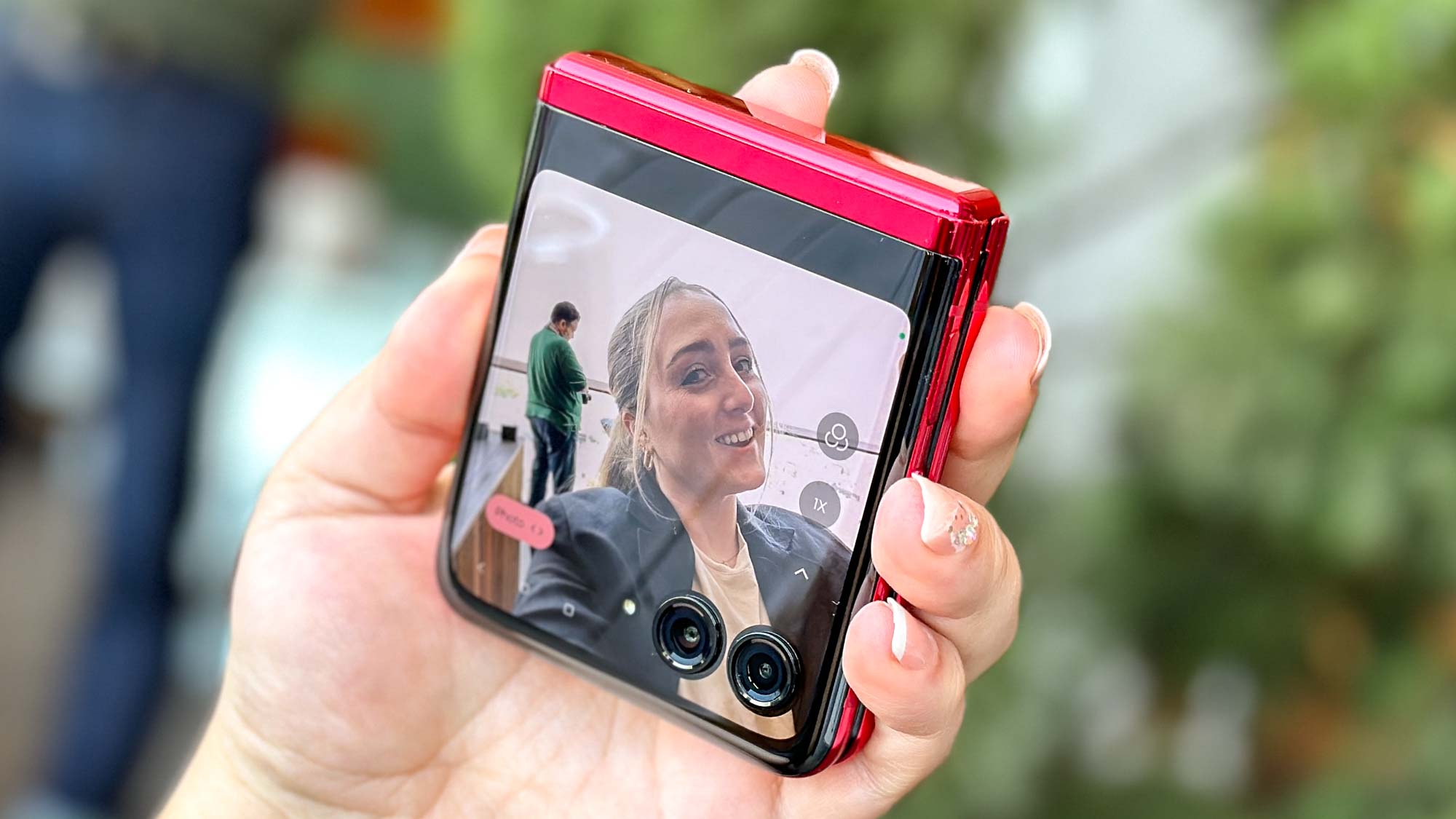I’m a videographer and there’s one thing I love about the Motorola Razr+ — and one thing I hate
I’ve been shooting YouTube videos for almost 15 years now, and while my mirrorless Panasonic camera is still my go-to, smartphones have become so reliable in the last several years that I’ve actually started to use them as b-roll cams. Yes, I’ve used them for professional work because they can achieve a beautiful depth of field to blow out background and keep sharp focus on subjects.
With the advent of foldable displays, however, I realized how foldable smartphones added yet another layer of utility that I wasn’t able to previously tap into — I could confidently use them for self-recording clips. The Motorola Razr+ is the company’s third stab at the foldable form factor, and it could potentially be its best one yet.
One of my colleagues, Kate Kozuch, got plenty of hands-on time with Motorola’s upcoming foldable. And you know what? It has me excited. This third-generation attempt is shaping out to be its most polished foldable, which it needs to be in order to remain relevant in the space.
As a videographer that’s not afraid to use a phone for professional work, there’s one thing I absolutely love about the Motorola Razr+ — and one thing I hate.
Perfect framing for self-shots

Clamshell foldables like the Razr+ are perfect for one-handed use, like vlogging, so Motorola naturally did the logical thing by increasing the size of the external display from 2.7-inches to 3.6-inches. The numbers may not seem dramatic, but as a videographer that’s used to recording self-shots, it could make a difference with the framing.
With the 3.6-inch 1066 x 1056 pOLED external display of the Razr+, it would allow me to better frame myself in the video. In contrast, it was nearly impossible to properly see myself using the Samsung Galaxy Z Flip 4’s tinier 1.9-inch external display. This would allow me to place the Razr+ about three to feet away from me on a stable surface (or my trusty monopod), and still be able to record myself from the waist up.
Best of all, I’d be using the better rear cameras on the Razr+ — while seeing myself on the external display. I cannot tell you how helpful this implementation is with the recording process. No longer would I need to rely on the front-facing cameras in order to record and see myself simultaneously.
There’s no manual video mode, and it needs one desperately

On the flip side, my colleague Kate Kozuch explained to me that she didn’t see a manual mode for recording videos during her brief time handling the Razr+. It’s a bummer because it would really make the Motorola Razr+ a stronger b-roll camera for me. That’s because I mostly record videos at 24 frames per second. Without a proper manual video mode, I wouldn’t be able to change parameters such as the ISO, shutter speed and white balance to best match the look of my main camera.
She did tell me there’s a “Pro” mode with the camera, but it’s only for capturing photographs — not for video. Even though there are third-party camera apps that can add manual controls for video, the good ones like Filmic Pro require you to pay into a subscription in order to access it. Meanwhile, I haven’t come across a free one that gave me all the controls I require.
For most people, this isn’t a huge omission if they’re simply using it for social clips, but adding a manual video mode would make the Razr+ a much more appealing option as a b-roll camera. While I’m crossing my fingers that Motorola could theoretically release a software update to add this mode, I’m not optimistic given how past and current Motorola devices, like the last generation Razr and the recent Moto G Stylus 5G (2023), don’t have manual video modes.
Here’s to hoping.
More from Tom’s Guide
For all the latest Technology News Click Here
For the latest news and updates, follow us on Google News.
